Starting on a weight loss journey can be daunting, and if you have a deliberate and health-focused approach, the path becomes clearer. A 7-Day No-Sugar, Anti-inflammatory Meal Plan offers a structured eating strategy that not just targets weight reduction but also combats inflammation, a silent catalyst for various health issues. The fusion of weight loss principles and anti-inflammatory foods provides an avenue for individuals to reshape their eating habits, prioritize nutrition, and start towards their weight goals within a manageable timeframe.

Understanding the connection between inflammation, weight gain, and dietary sugar is pivotal. Inflammation is linked to a host of chronic diseases and can be exacerbated by excess weight and high sugar consumption. Therefore, this meal plan emphasizes the importance of whole, nutrient-dense foods that are naturally low in sugar but rich in anti-inflammatory properties. Foods rich in antioxidants, fiber, and healthy fats are cornerstone elements to help the body heal and reduce inflammation while cutting out sugars aids in lowering calorie intake and stabilizing blood sugar levels. With proper planning and the right ingredients, delicious and healing meals can support weight loss goals and overall health improvements.
Key Takeaways
- The meal plan combines weight loss with anti-inflammatory benefits.
- Whole foods and reduced sugar intake are crucial.
- The right nutrients can promote healing and weight management.
Understanding Inflammation and Weight Loss

Inflammation is the body’s immune response to an irritant, whether that’s an injury, infection, or the presence of harmful substances. Chronic inflammation, however, can be a silent adversary in one’s weight loss journey. It often lurks unnoticed and might contribute to weight gain or difficulty in losing weight.
An anti-inflammatory meal plan is designed to reduce inflammation by encouraging the consumption of foods that support the body’s natural healing processes. These foods are typically rich in nutrients such as antioxidants, fiber, and healthy fats, which can help lower inflammation levels.
When it comes to weight loss, the balance of calories consumed versus calories burned is fundamental. An anti-inflammatory diet not only helps in reducing inflammation but also can be structured to support weight management by controlling calorie intake. This is done without sacrificing nutritional value, ensuring that the body receives enough fuel to function properly while still enabling fat loss.
Individuals with conditions like diabetes might find that an anti-inflammatory diet also supports blood sugar control. This is because many anti-inflammatory foods have low glycemic indices and, thus, a more gradual effect on blood sugar levels.
Managing one’s weight and health requires a multi-faceted approach. By combining the principles of an anti-inflammatory diet with mindful calorie management, one might see an improvement in their inflammatory markers and body composition.
Here’s a simple breakdown:
- Inflammation: Body’s immune response, can contribute to weight gain if chronic.
- Anti-inflammatory Diet: Focuses on foods high in antioxidants, fiber, and healthy fats.
- Calories: Managing intake can help with weight loss while on an anti-inflammatory regimen.
- Diabetes: Low-glycemic, anti-inflammatory foods may aid in blood sugar control.
Fundamentals of a No-Sugar Diet

Adopting a no-sugar diet often means more than just avoiding sweet treats; it involves a vigilant approach to choosing foods and understanding labels. This dietary shift can play a pivotal role in weight loss and reducing inflammation.
Identifying Hidden Sugars
On the surface, steering clear of sugary snacks and desserts may appear straightforward. However, sugars often lurk in many processed foods where they’re not immediately obvious. They might hide under various names—maltose, dextrose, fructose, and high-fructose corn syrup, to name a few. A critical step is to scrutinize ingredient lists for these hidden sugars and opt for whole, unprocessed foods instead.
- Look for words ending in “-ose” as indicators of sugar.
- Be cautious of anything labeled as “low-fat” or “diet,” as these items can be high in sugar.
- Remember that even products marketed as “healthy” can contain significant amounts of sugar.
Benefits of Reducing Sugar Intake
Limiting one’s sugar intake can lead to numerous health benefits. They may notice a reduction in inflammation, which can otherwise contribute to chronic diseases. People with diabetes, or those at risk, can markedly improve their blood sugar control and insulin sensitivity by reducing added sugar in their diet. Moreover, by replacing high-carb, sugary options with nutrient-dense foods, individuals can experience sustainable weight loss.
- Cutting down on sugar can decrease the risk of developing diabetes.
- Choosing foods low in added sugars supports a healthier overall diet.
Core Components of the Anti-inflammatory Meal Plan
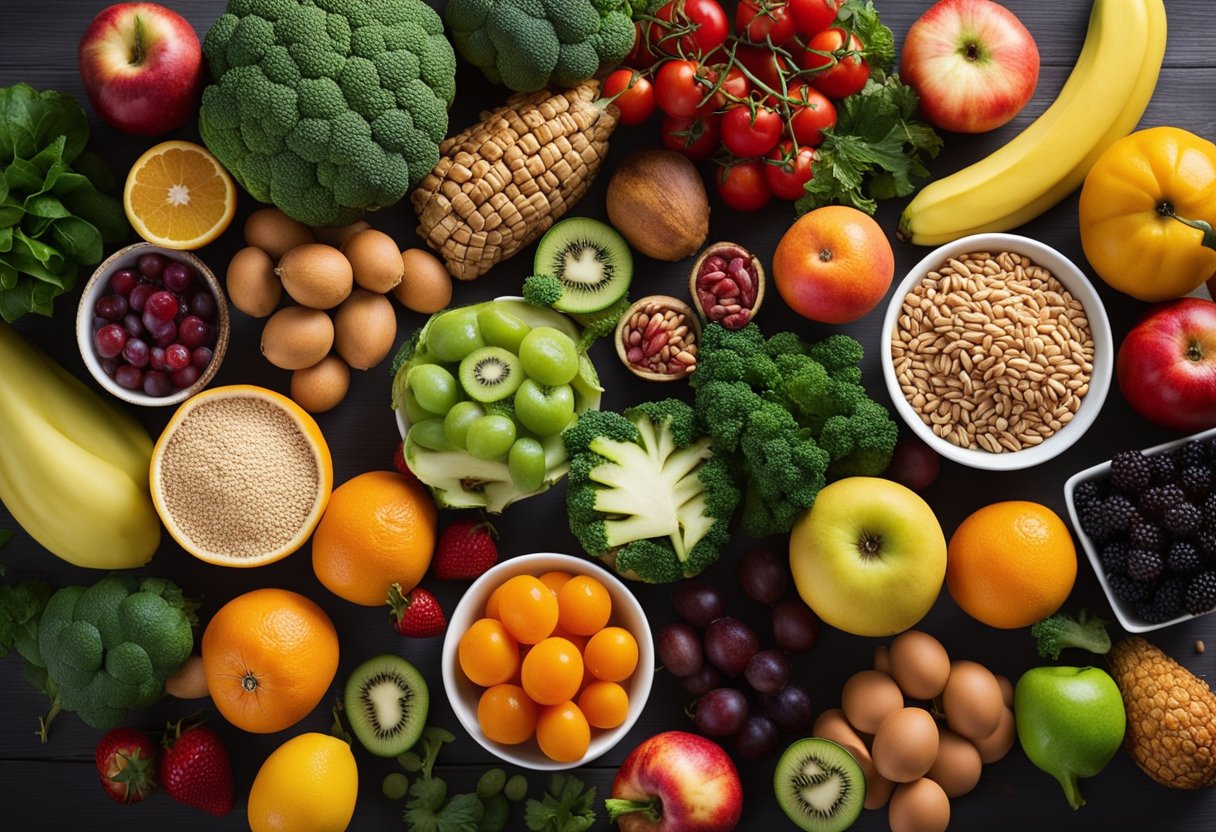
A cornerstone of the anti-inflammatory diet involves focusing on whole, nutrient-dense foods. When crafting a meal plan that targets inflammation and supports weight loss, certain food categories are key.
- Proteins: Lean sources like chicken, fish, and beans are staples, as they provide essential amino acids without excess calories. They’re an integral part of the meal structure, often featured in dishes that might be part of a 7-Day No-Sugar High-Protein Anti-Inflammatory Meal Plan.
- Vegetables & Fruits: These two groups are loaded with vitamins, minerals, and antioxidants. Choices like berries, leafy greens, and cruciferous veggies are highly recommended.
- Whole Grains: Oats, quinoa, and brown rice provide sustainable energy and are much needed for their high fiber content. Incorporating these can help maintain a feeling of fullness.
- Healthy Fats: Items rich in unsaturated fats, such as avocados, nuts, and seeds, not only support heart health but also temper inflammation. Olive oil, particularly extra virgin, is frequently used for its anti-inflammatory properties.
- Spices: Certain herbs and spices, notably turmeric and ginger, are celebrated for their anti-inflammatory effects and can be liberally used to flavor meals.
It’s important to exclude refined sugars, processed foods, and excessive saturated fat, as they can exacerbate inflammation. Incorporating a diverse range of anti-inflammatory foods into a meal plan not only can improve overall health but also assist with weight loss. With smart choices and a little creativity, one can enjoy a colorful and satisfying diet that combats inflammation while contributing to weight control.
Meal Planning Strategies

Proper meal planning is essential for a successfully tailored no-sugar, anti-inflammatory meal plan aimed at weight loss. It requires a strategic approach, from drafting a thorough shopping list to understanding portion control, to ensure balance and effectiveness throughout the week.
Creating a Shopping List
Firstly, one should compile a shopping list that aligns with their meal plan. This list should include fresh vegetables, lean proteins, whole grains, and healthy fats, devoid of processed sugars and inflammation-inducing foods. For instance, leafy greens, berries, nuts, and seeds are staples in an anti-inflammatory diet. Organizing the shopping list by category—produce, dairy, proteins, and pantry items—can streamline the shopping process and help individuals stay on track.
Meal Prep Tips
When it comes to meal prep, having a set of reliable tips can make all the difference. Preparing meals in batches, for example, ensures that they have healthy options ready-to-go. They should focus on preparing versatile base ingredients, such as grilled chicken or quinoa, that can be used in multiple dishes throughout the week. Storing meals in clear containers in the fridge can also help keep them organized and make it easier to grab a balanced meal even when time is short.
Portion Control
Understanding and implementing portion control is key to achieving weight loss goals while following this meal plan. One might use measuring cups or a digital food scale to accurately serve portions. They could also use smaller plates to naturally limit servings or visually divide their plate—half for vegetables, a quarter for lean protein, and a quarter for complex carbohydrates—to ensure a balanced meal.
7-Day Meal Plan Overview
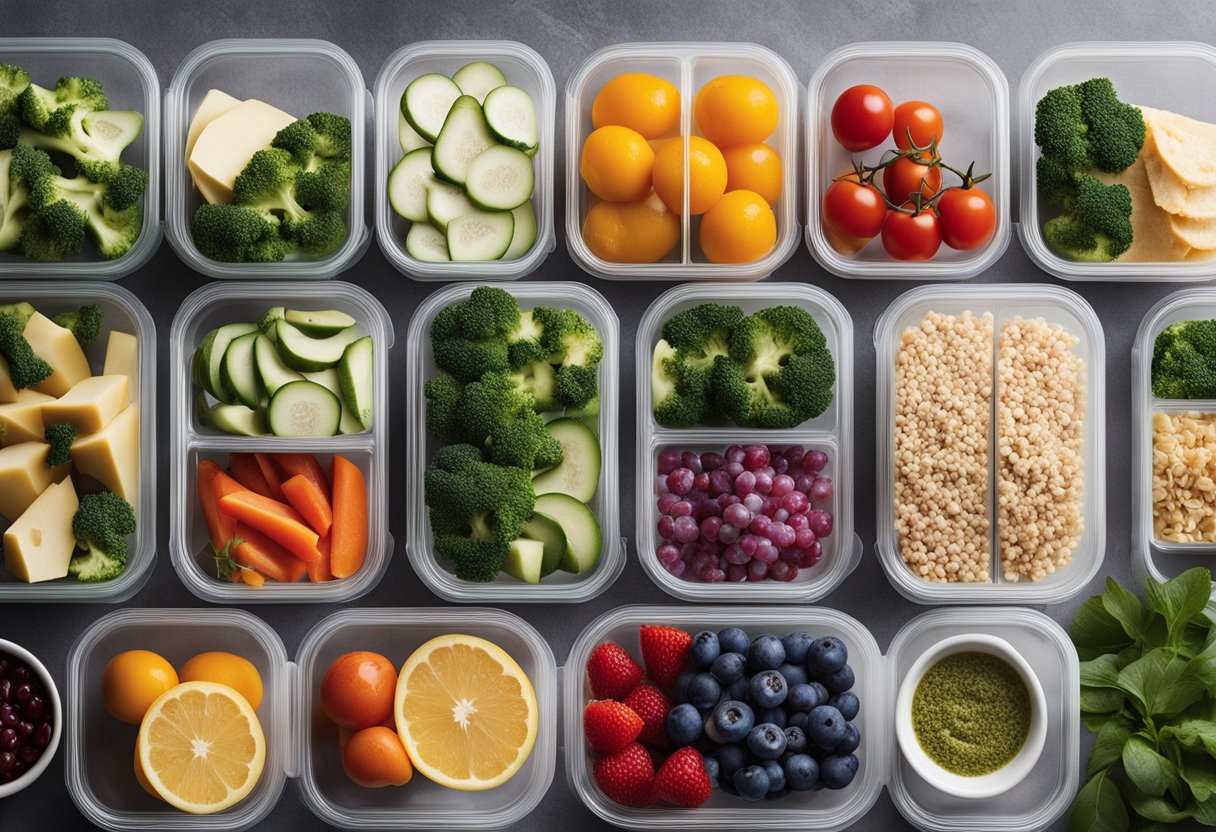
This meal plan is meticulously designed to curb sugar intake and combat inflammation. Each day introduces meals rich in protein, whole grains, and a bounty of fruits and vegetables, making weight loss a more flavorful journey.
Day 1: Kickstart Your Plan
On the first day, they’ll dive into a protein-packed breakfast. Think a spinach and avocado omelet, which sets the tone for a day filled with nutrient-dense foods. For lunch and dinner, options like a grilled chicken salad and salmon with a side of quinoa deliver both flavor and balance.
Day 2: Variety and Balance
They’ll begin with oatmeal with berries, transitioning to a lunch of tofu stir-fry loaded with vegetables. By dinner, a colorful array of roasted vegetables beside a lean protein ensures they’re enjoying a variety of food groups and maintaining balance.
Day 3: Midweek Momentum
Midweek introduces a smoothie with fruits and leafy greens, blending taste and nutrition. They’ll continue with a quinoa and chickpea bowl at lunchtime, followed by a satisfying, herb-infused chicken dish to carry the momentum into the second half of the week.
Day 4: Plant-Based Focus
The fourth day spotlights plant-based meals starting with a chia-and-almond-milk pudding. Lunch features heart-healthy lentil soup, and dinner serves up a robust eggplant and bean casserole, harnessing the power of vegetables for lasting satiety.
Day 5: Omega-3 Rich Foods
They’ll embrace the heart-health benefits of omega-3s with a smoked salmon and avocado toast for breakfast. A midday meal of walnut-crusted chicken offers a satisfying crunch, and dinner includes a grilled salmon plate, providing a second boost of essential fatty acids.
Day 6: Flavorful Herbs and Spices
Breakfast is simple yet zesty with a turmeric-infused smoothie. Lunchtime brings a burst of flavor with a spiced lentil salad. Dinner is all about the aromatics; a savory herb-crusted tofu dish that elevates taste without additional sugars.
Day 7: Culminate and Reflect
On the final day, they’ll reflect on the past week with a berry and flaxseed parfait, celebrating the natural sweetness of fruits. A vibrant veggie wrap for lunch precedes the finale dinner of spice-rubbed chicken alongside a medley of roasted root vegetables.
Delicious Anti-inflammatory Recipes

Incorporating a variety of flavors and nutrient-dense ingredients, these anti-inflammatory recipes are both beneficial for health and palatable for daily enjoyment.
Breakfast Options
Wake up to a vibrant start with Overnight Oats mixed with almond milk, berries, and seeds for a filling and nutritious beginning. Alternatively, a Green Smoothie with spinach, avocado, and a touch of apple can energize the morning with its creamy texture and health-boosting properties.
Energizing Lunches
Lunchtime calls for meals that can power through the afternoon. A Quinoa and Chickpea Salad topped with tomatoes, cucumbers, and avocado provides a hearty base with ample protein and healthy fats. For those who prefer something warm, a Broccoli and Sweet Potato Soup pairs well with a slice of whole-grain bread.
Satisfying Dinners
Dinner options include a Salmon and Vegetable Bake; the salmon’s omega-3 fatty acids and the roasted vegetables’ antioxidants make for a heart-healthy dish. Alternatively, a Tofu and Broccoli Stir-fry over brown rice offers a plant-based protein punch that satisfies the appetite while aiding inflammation reduction.
Healthy Snacks
Snack-wise, an Apple with Almond Butter is a quick and easy go-to, or Hummus with Crisp Vegetables can serve as a crunchy and protein-rich option. For those with a nut allergy, roasted Chickpeas or Peas can provide a satisfying crunch without compromising on nutrition or taste.
Understanding Macronutrients and Their Role
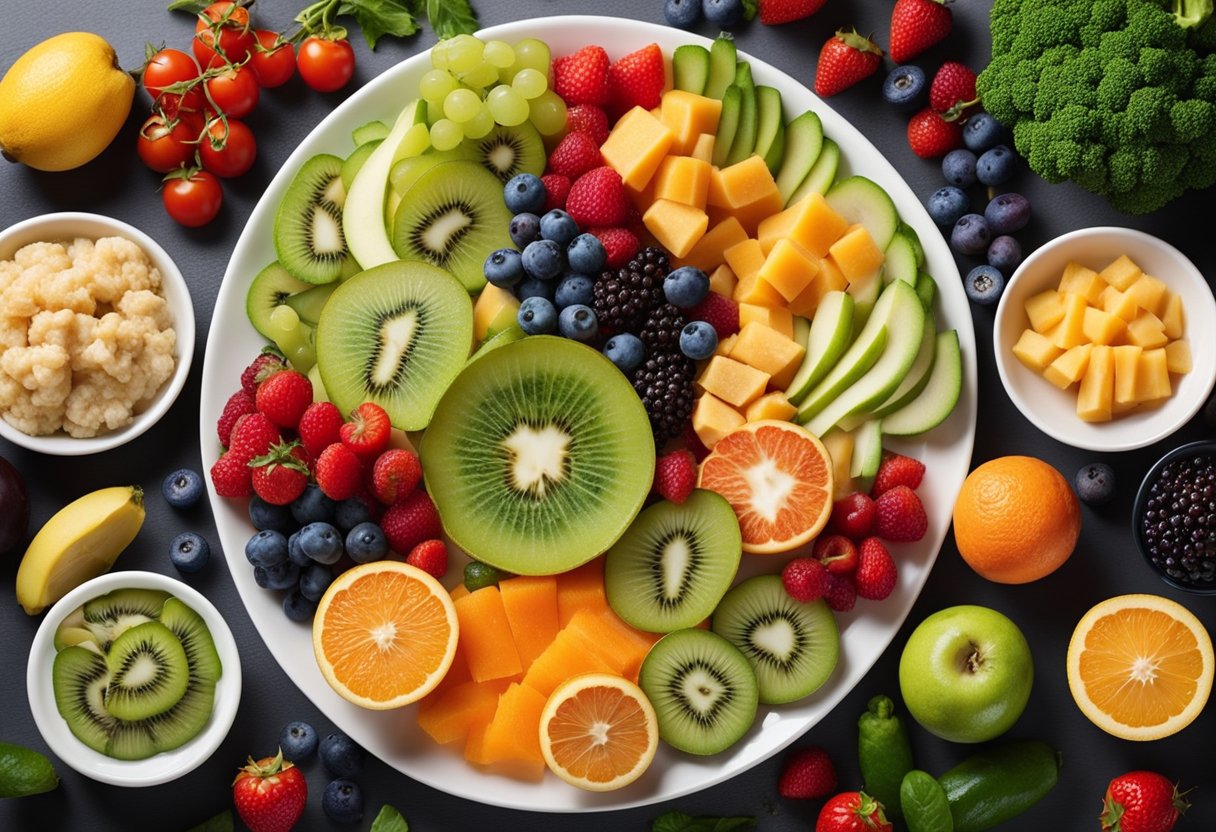
When it comes to a no-sugar, anti-inflammatory meal plan for weight loss, understanding the role of macronutrients is key. They ensure that the body gets the necessary energy and support for overall health.
Carbohydrates and Fiber
Carbohydrates are the body’s primary energy source. In a healthy meal plan, focus on high-fiber carbs which have a minimal impact on blood sugar levels. Fiber, a form of carbohydrate the body cannot digest, plays a crucial role in satiety and digestive health. Foods like chia seeds and certain fruits and vegetables are great sources.
- Examples:
- Chia seeds: high in both carbs and fiber
- Vegetables: low in carbs and high in fiber
Quality Proteins
They need high-quality proteins to maintain muscle mass and support metabolic functions. Lean sources such as chicken, salmon, and legumes are ideal choices, providing essential amino acids with minimal saturated fat.
- Examples:
- Salmon: rich in omega-3 fatty acids
- Almonds: a plant-based protein that’s also high in healthy fats
Healthy Fats
Healthy fats, especially those from nuts, seeds, and olive oil, provide long-lasting energy and are vital for nutrient absorption. They should opt for unsaturated fats to support anti-inflammatory benefits.
- Good Fat Sources:
- Olive oil: a monounsaturated fat great for heart health
- Almonds and seeds: contain both unsaturated fats and protein
Recommended Food Choices

When embarking on a 7-day no-sugar, anti-inflammatory meal plan for weight loss, making the right food choices is crucial. These recommendations focus on nutrient-dense options to reduce inflammation and support weight loss.
Fruits and Vegetables
Fruits and vegetables are essential for their high fiber content and anti-inflammatory nutrients. They recommend loading half of one’s plate with a colorful variety, targeting an array of antioxidants. Vegetables like kale, spinach, and broccoli are excellent for their nutrient density, while berries, apples, and oranges provide sweetness without added sugar.
- Vegetables: Kale, spinach, broccoli, cauliflower, carrots, beets
- Fruits: Berries (strawberries, blueberries), apples, oranges
Whole Grains and Legumes
Whole grains and legumes are a foundational aspect of this meal plan because they offer essential vitamins, minerals, and fiber which can help in feeling full. Options such as quinoa and brown rice are excellent whole grains to include due to their protein content and low glycemic index. Legumes, including beans, peas, and lentils, provide a hearty dose of protein and fiber, which are known to aid in weight loss.
- Whole Grains: Quinoa, brown rice, oats
- Legumes: Beans (black, kidney, pinto), chickpeas, lentils
Lean Proteins and Alternative Proteins
Lean proteins such as chicken, turkey, and fish should be staples in the protein section of the meal plan. They provide the necessary building blocks for muscle without excess calories or fat. Plant-based proteins like tofu, chia seeds, and other legumes offer variety and additional nutrients important for a balanced diet.
- Lean Proteins: Chicken breast, turkey, salmon, tuna
- Alternative Proteins: Tofu, chia seeds, tempeh
Foods to Avoid

When they’re looking to reduce inflammation and shed pounds, individuals should pay close attention to what goes on their plates. Some foods can counteract their efforts, promoting inflammation and weight gain.
Sugary Foods: It’s a no-brainer—sugar is a big no on this meal plan. They need to steer clear of sodas, candy, and baked goods that pack in the sweetness. Even “healthy” sugar options like honey or agave can sabotage their no-sugar dedication.
Dairy Products: Although dairy can have its place in a balanced diet, those following an anti-inflammatory plan might want to avoid milk, cheese, and other dairy items. Dairy can be pro-inflammatory for some individuals, and opting for plant-based alternatives could be beneficial.
Processed and Highly Processed Foods: Time to ditch those convenient pre-packaged snacks and meals. Processed foods often come loaded with added sugars, salts, and unhealthy fats. They won’t do them any favors in the weight loss department and can contribute to inflammation.
Inflammatory Foods: Below is a quick list of items to avoid because they can trigger inflammatory responses:
- Fried foods
- Refined carbs like white bread and pastries
- Red meat (especially processed meats)
- Margarine, shortening, and lard
By dodging these inflammatory culprits, they’ll set themselves up for better success in combatting inflammation and moving towards their weight loss goals.
Adapting the Meal Plan for Specific Needs

When customizing a no-sugar, anti-inflammatory meal plan for weight loss, one must consider individual dietary requirements. Caloric needs often vary based on gender and personal health goals, making adaptations to protein intake and overall calories necessary.
Meal Plan Variations for Men
Men typically require more calories than women to support their generally larger body size and muscle mass. For a man looking to lose weight on this meal plan, the daily calorie intake might be set between 1,500 to 2,500 calories. Incremental increases in protein could be beneficial, emphasizing foods like grilled chicken or fish. The focus should remain on whole foods to reduce inflammation.
- Typical Daily Intake for Men:
- Calories: 1,500 – 2,500
- Proteins: 20% – 30% of daily calories
Meal Plan Variations for Women
For women, the caloric needs are generally lower but must still support their health and wellness. A woman’s meal plan might skew towards 1,200 to 1,800 calories per day depending on activity levels and personal goals. The protein ratio can be adjusted to include lean meats, legumes, and tofu while still keeping an eye on calorie count. Nutrient-dense foods that are high in fiber can help manage hunger.
- Typical Daily Intake for Women:
- Calories: 1,200 – 1,800
- Proteins: 15% – 25% of daily calories
Lifestyle Considerations
Embarking on a 7-day no-sugar, anti-inflammatory meal plan for weight loss requires more than just diet changes. One needs to consider their overall lifestyle, focusing on adequate water intake, consistent physical activity, and the balance between stress management and adequate sleep to support their health goals.

Hydration and Water Intake
Hydration plays a critical role in any weight loss plan. Drinking enough water can help reduce inflammation and support the body’s natural detoxification processes. For this meal plan, aim for:
- 8-10 glasses of water per day
- Incorporate herbal teas or infused water for variety
Physical Activity
While diet is key, combining it with regular physical activity enhances its anti-inflammatory effects and aids in weight loss. Recommendations include:
- At least 150 minutes of moderate exercise per week
- Incorporate a variety of aerobic and strength training exercises
Stress Management and Sleep
Stress can provoke inflammation and derail weight loss efforts, while adequate sleep is essential for recovery. They can manage stress and improve sleep by:
- Practicing mindfulness or yoga
- Aiming for 7-9 hours of quality sleep each night
Remember, a well-rounded approach ensures the best chance for success on this meal plan.
Maintenance After the 7-Day Plan
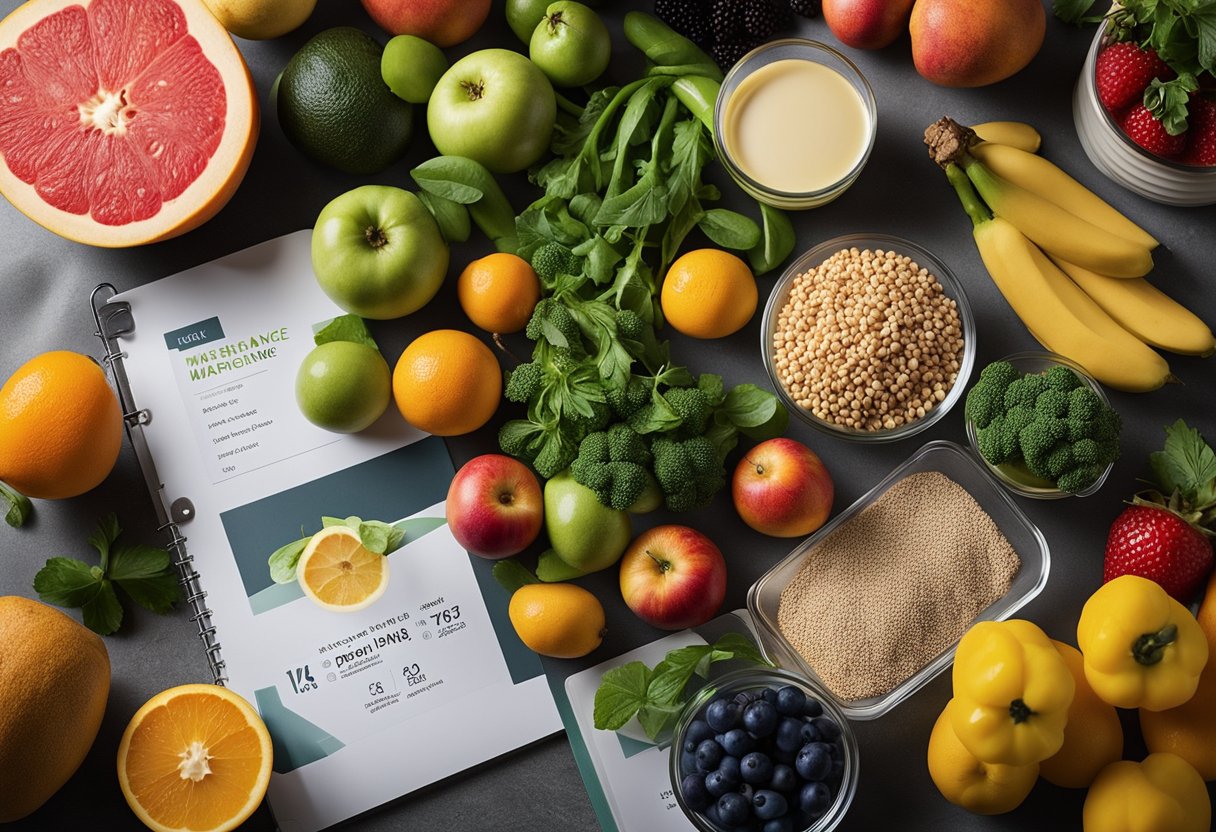
After completing a 7-Day No-Sugar, Anti-inflammatory Meal Plan, it’s key to transition into a maintenance phase that promotes lasting health and balance. They should continue incorporating anti-inflammatory foods into their diet to sustain the benefits.
Foods to Keep Eating:
- Fruits: berries, oranges, and cherries
- Vegetables: leafy greens, tomatoes, and beets
- Healthy Fats: olive oil, avocados, and nuts
- Whole Grains: brown rice, quinoa, and oats
- Protein: beans, lentils, and fatty fish like salmon
Tips for Maintenance:
- Hydrate: Adequate water intake is crucial.
- Moderation: Enjoy treats in small amounts.
- Variety: Incorporate a rainbow of produce to get a broad spectrum of nutrients.
- Routine: Develop a meal prep routine to stay on track.
Sample Day in Maintenance:
- Breakfast: Oatmeal with walnuts and blueberries
- Lunch: Quinoa salad with mixed veggies and grilled chicken
- Snack: Carrot sticks with hummus
- Dinner: Baked salmon with steamed broccoli and sweet potato
- Dessert: Greek yogurt with a drizzle of honey and cinnamon
They should listen to their body’s response to different foods and adjust their meal plan accordingly to maintain a consistent approach to health. Avoiding added sugars remains a cornerstone of the maintenance phase, just like it was during the initial 7-day plan. This lifestyle change can contribute to lasting weight management and overall well-being.
Supplements and Natural Add-ons
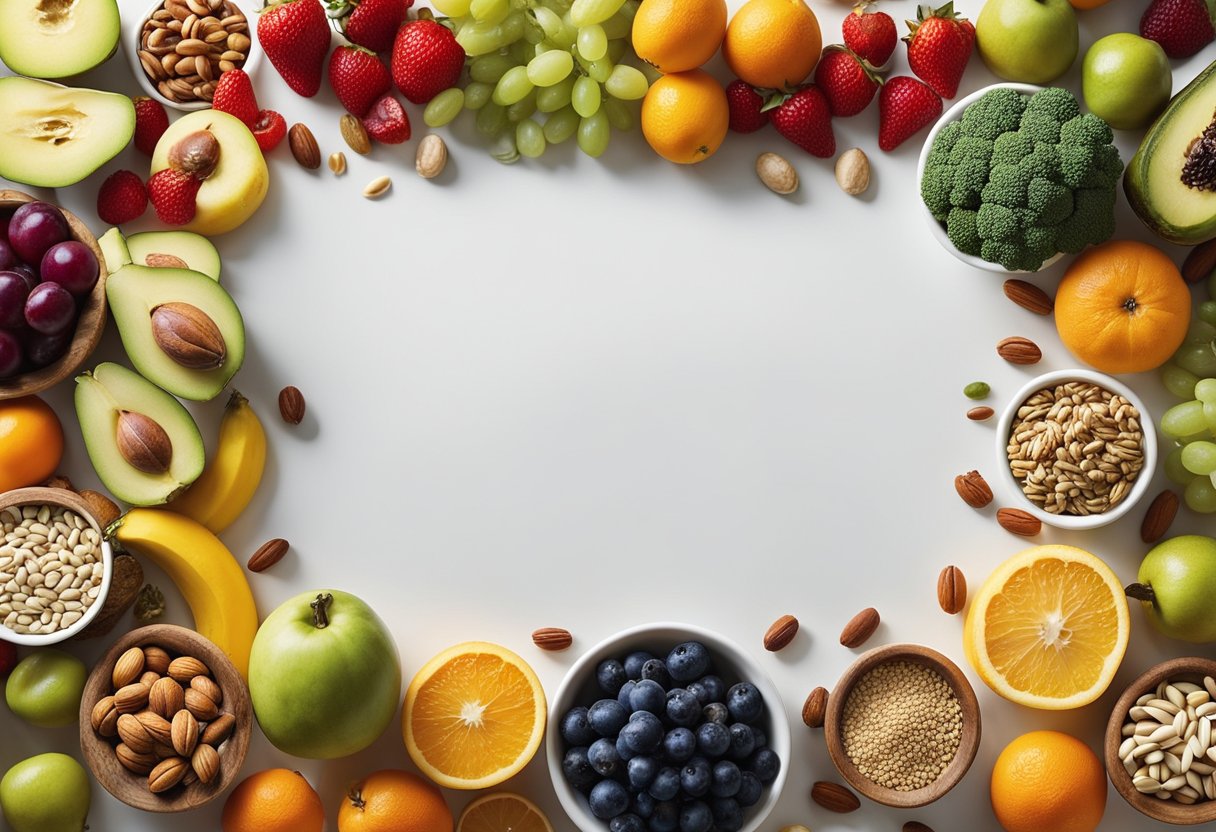
When diving into a 7-Day No-Sugar, Anti-inflammatory Meal Plan for Weight Loss, supplements and natural add-ons can optimize health benefits and support the body’s natural healing processes. Let’s explore some key herbs and spices, as well as nutritional supplements, that can complement this dietary approach.
Herbs and Spices with Anti-inflammatory Properties
Adding herbs and spices to meals is an easy way to enhance flavor without added sugars while reaping anti-inflammatory benefits. For example, turmeric is renowned for its compound curcumin, which has potent anti-inflammatory effects and acts as an antioxidant. Sprinkling ginger in smoothies or teas can aid in digestion and may contribute to reduced inflammation. Cumin is another spice that can be used in various dishes to add a warm, earthy flavor and it may help with digestive health. Incorporating fresh herbs, such as basil or parsley, can also provide antioxidants which are important for combating stress on the body and support a healthy immune response.
Nutritional Supplements
In addition to a balanced diet, certain nutritional supplements might be considered to further support an anti-inflammatory lifestyle:
- Omega-3 fatty acids, often found in fish oil supplements, have been studied for their role in reducing inflammation.
- For those who may not get enough anti-inflammatory substances from their diet, a curcumin supplement can be a concentrated way of getting the active ingredient in turmeric.
- A ginger supplement could be advantageous for individuals seeking joint pain relief or gastrointestinal support.
Including these supplements and natural add-ons in one’s diet can contribute to the overall effectiveness of an anti-inflammatory meal plan, potentially aiding in weight loss and improving general well-being.
Conclusion

Engaging in a 7-day no-sugar, anti-inflammatory meal plan is a proactive step towards better health and weight management. They’ve seen that by eliminating added sugars and embracing whole foods rich in nutrients, individuals can combat inflammation and support their weight loss journey.
This approach isn’t just about calorie control; it’s a holistic way to revitalize the body’s systems. Reducing inflammation can lead to an overall sense of well-being and can be particularly beneficial for those managing chronic conditions.
A typical plan, set at around 1,500 calories per day, can be adjusted to meet various dietary needs. Whether she requires fewer calories or he needs a bit more to sustain his lifestyle, modifications ensure that each person’s unique requirements are met.
Here’s a simple overview:
- Breakfast: Start with protein-rich eggs and greens.
- Lunch: Opt for a vibrant salad with quinoa and chickpeas.
- Snack: Nibble on nuts or a piece of fruit.
- Dinner: Enjoy grilled fish with a side of roasted vegetables.
Within a week, they might notice improved energy levels and reduced cravings for sugary treats. Though short-term, it often serves as a stepping stone towards sustainable, healthful eating habits for life.
Remember, this meal plan acts as a framework. One should consult with a health professional before making significant changes to their diet, especially if they’re managing health conditions.
With commitment and mindfulness, the no-sugar, anti-inflammatory meal plan is a powerful tool in their wellness arsenal. It might just be the beginning of a healthier, happier them.
Frequently Asked Questions
This section addresses common inquiries regarding a sugar-free, anti-inflammatory meal plan aimed at reducing inflammation and aiding in weight loss.
What foods are typically included in an anti-inflammatory meal plan without sugar?
An anti-inflammatory meal plan without sugar commonly features foods rich in antioxidants and healthy fats, such as leafy greens, nuts, seeds, and fatty fish like salmon. Whole foods are a focus, replacing processed items and avoiding added sugars.
Can cutting out sugar really help with inflammation and weight loss?
Yes, eliminating sugar from one’s diet has been associated with a decrease in inflammation markers and can support weight loss efforts by reducing calorie intake and curbing cravings for high-calorie, sugary foods.
What is a typical daily menu look like on a 7-day high-protein, anti-inflammatory diet?
A daily menu on this diet could include a breakfast of avocado and eggs, a lunch of quinoa salad with roasted vegetables, an afternoon snack of Greek yogurt with berries, and a dinner of grilled chicken with steamed broccoli.
Are there any simple meal prep tips for sticking to a no-sugar, anti-inflammatory diet?
To stick to this diet, individuals can prep meals in batches, like cooking a week’s worth of protein portions or chopping vegetables in advance, and portioning out snacks such as nuts or cut-up vegetables to avoid reaching for sugary alternatives.
How do I manage cravings while following a 7-day plan with no sugar?
Managing cravings involves staying hydrated, eating balanced meals with protein and fiber to stay full, and considering natural sweeteners like cinnamon or vanilla extract to add flavor without sugar.
What are the potential health benefits of a high-protein, no-sugar diet for someone with high blood pressure?
A high-protein, no-sugar diet may help someone with high blood pressure by promoting weight loss, reducing insulin resistance, and decreasing the intake of processed foods that often contain high levels of sodium and sugars, contributing to blood pressure concerns.